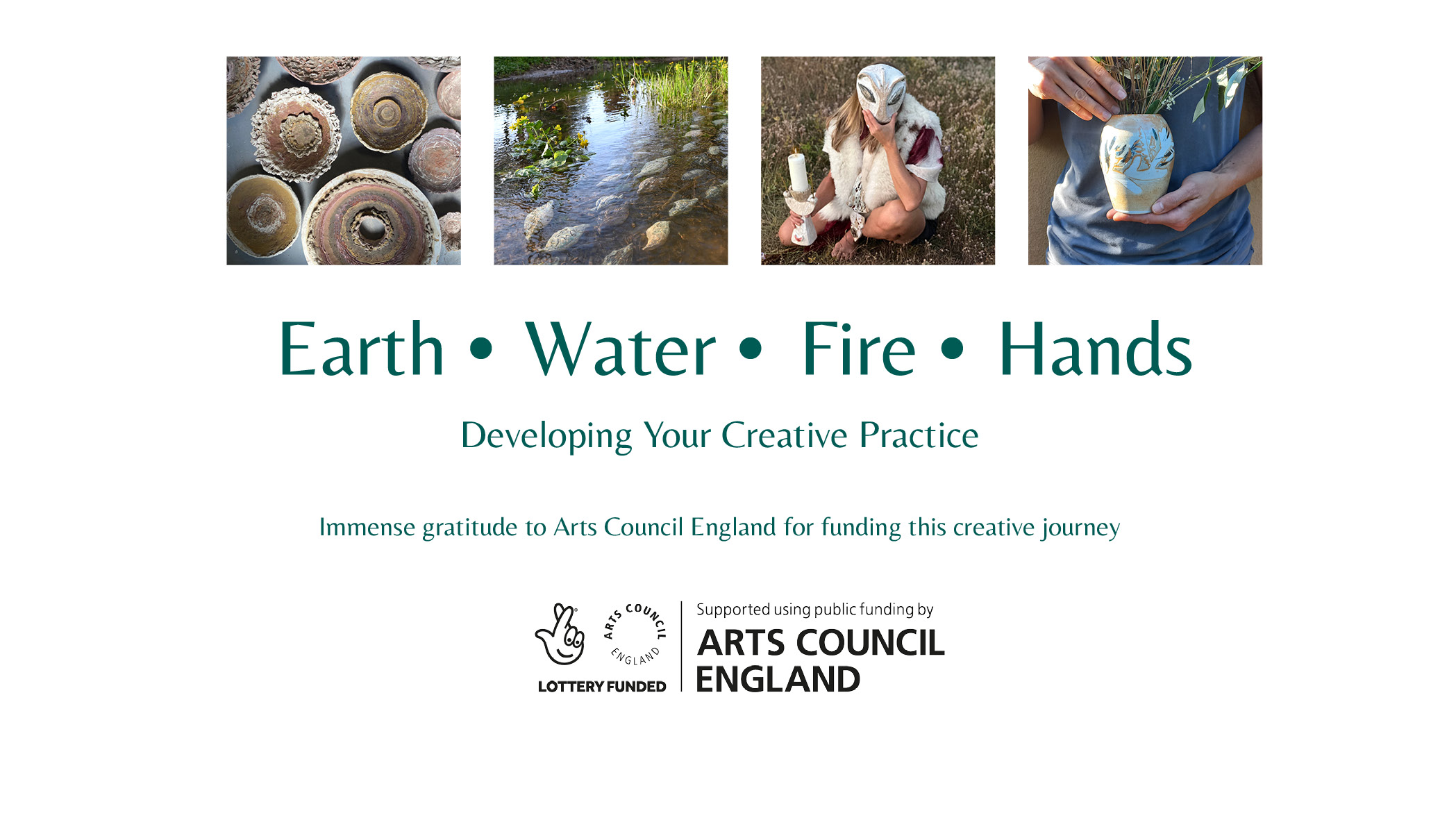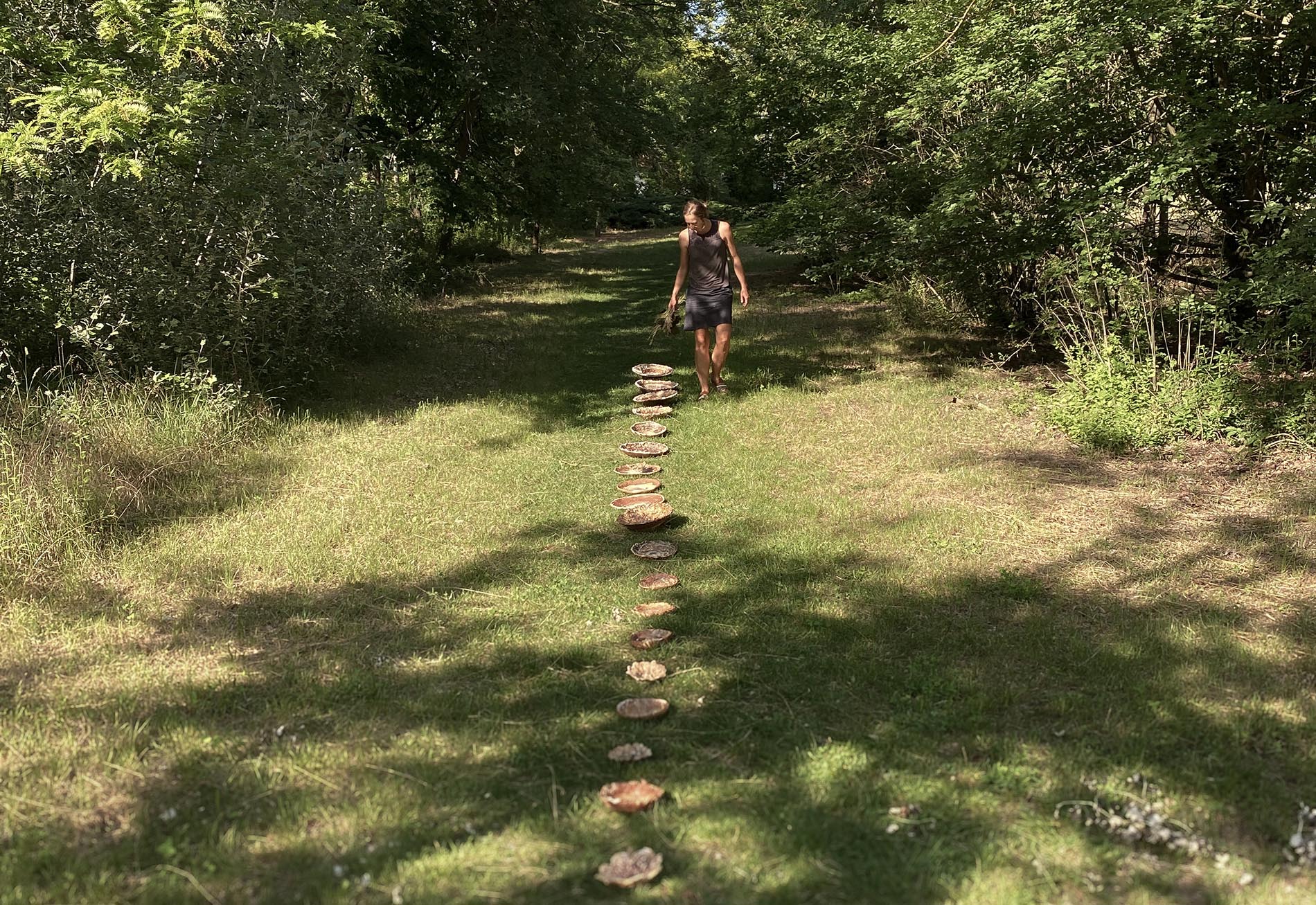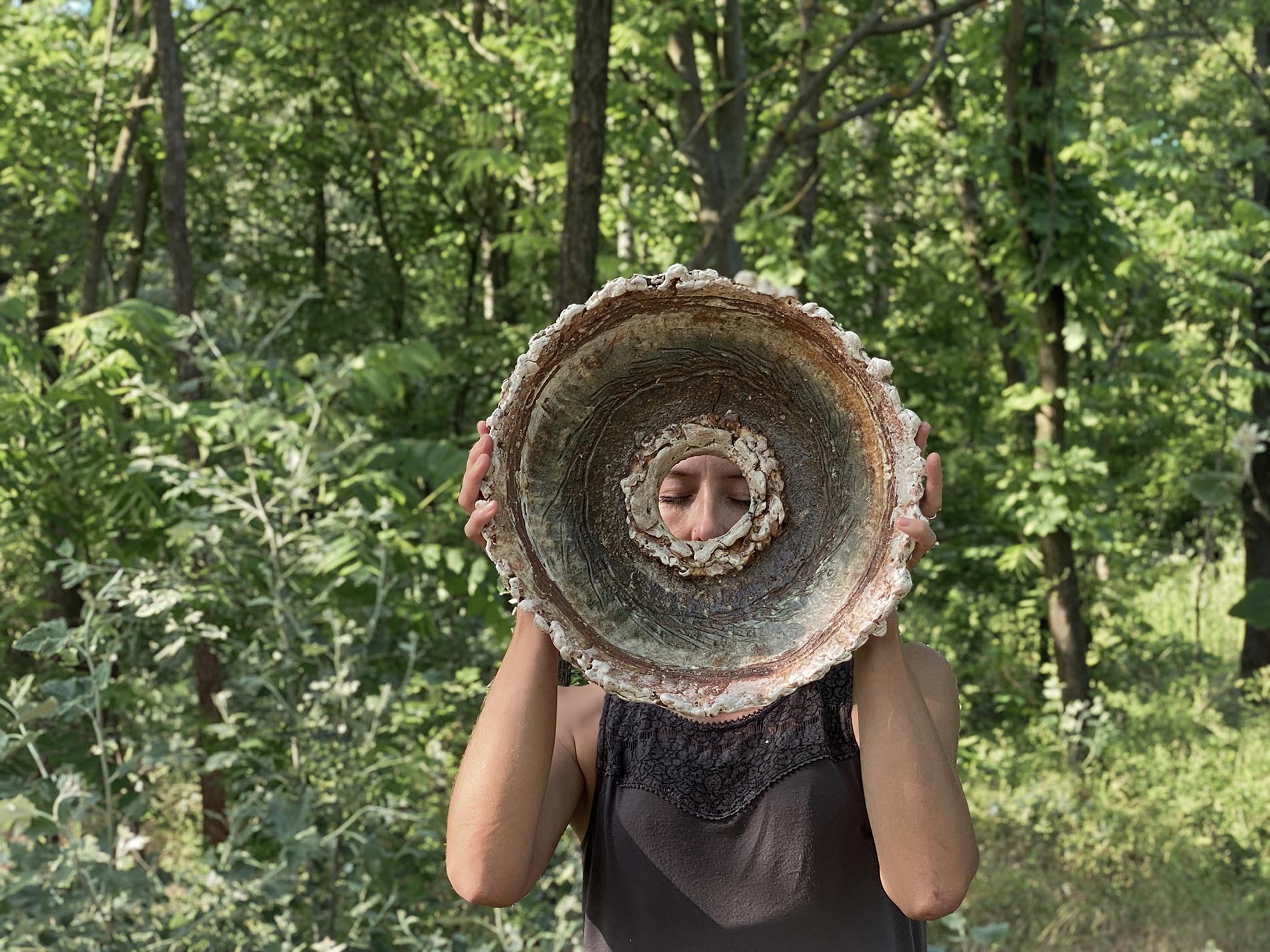Process of finding and working with wild clay – ICS Hungary ceramic residency: Spring 2024
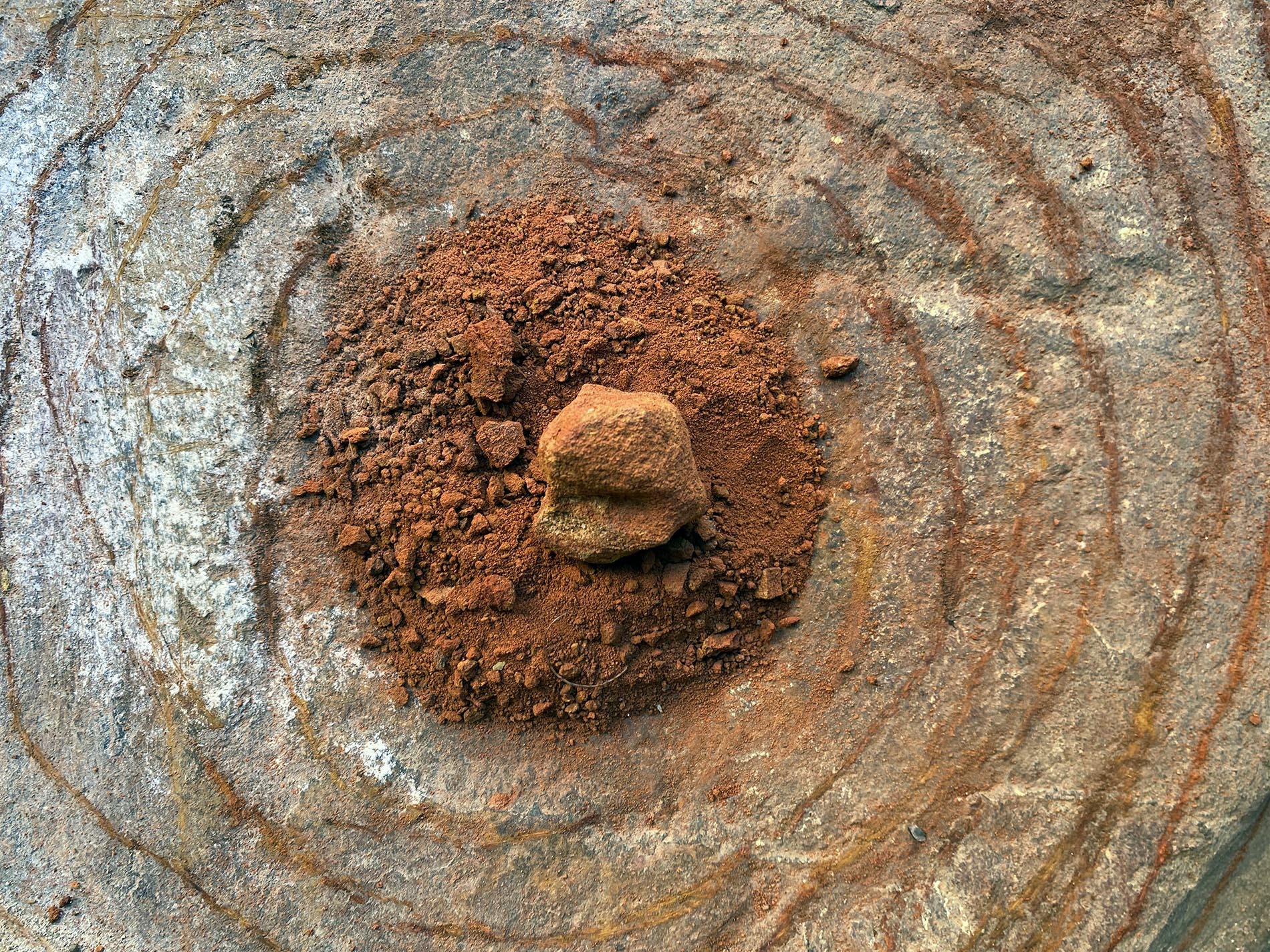
Exploring natural pigments made from rocks and clays collected from the European and African landscape
This month at ICS Hungary is a deep dive into place-based ceramics inspired by the natural world. I wanted to incorporate geological remnants into my work here, due to my European heritage and my South African upbringing. I have been collecting small samples of clays from around the Kecskemét area, a city just south of the capital Budapest where I am staying, but the region is known mostly for its loose and sandy soil. The name of the city stems from the Hungarian word kecske meaning “goat” and -agriculture meaning “pass” so has roots in the land being used for agricultural uses. Animal breeding declined at the end of the 18th century as the fields had become overgrazed and overused but increased in importance after a vine-pest destroyed most vineyards in other hilly regions in the 19th century. Damage was less significant in this area but means it has been more challenging finding pure clay due to the sand content.
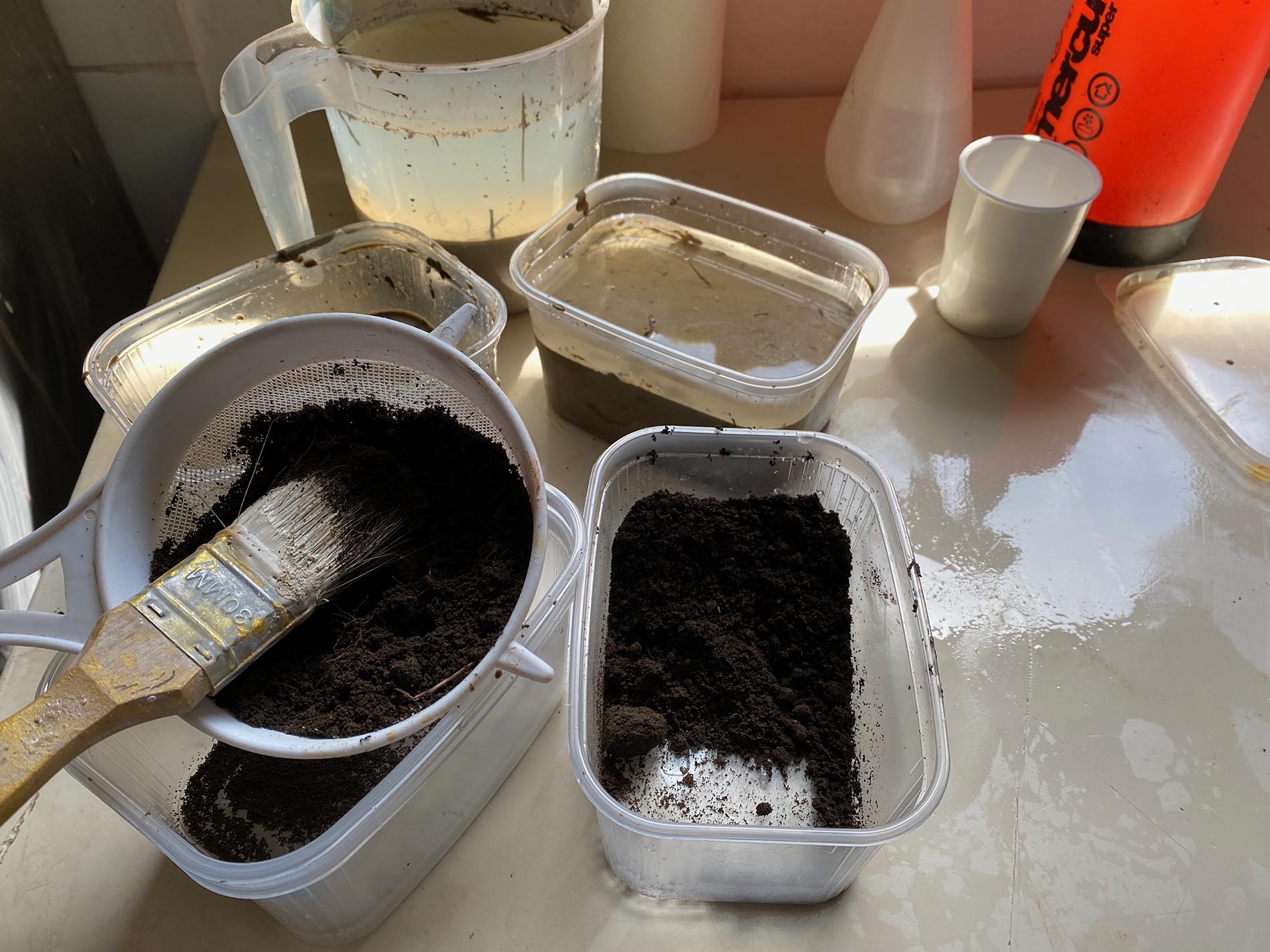 My scouting usually starts in areas around rivers or other sources of water and I have managed to find a few malleable samples.
My scouting usually starts in areas around rivers or other sources of water and I have managed to find a few malleable samples.
I pass each clay sample through a sieve to remove organic material and any larger rock fragments and am planning on using them as wild slips as surface decoration. An easy way to know if there is clay in the sample is trying to make a simple ball and coil with the clay and trying to connect both ends without it cracking as well as doing the Mudshake or Jar test.
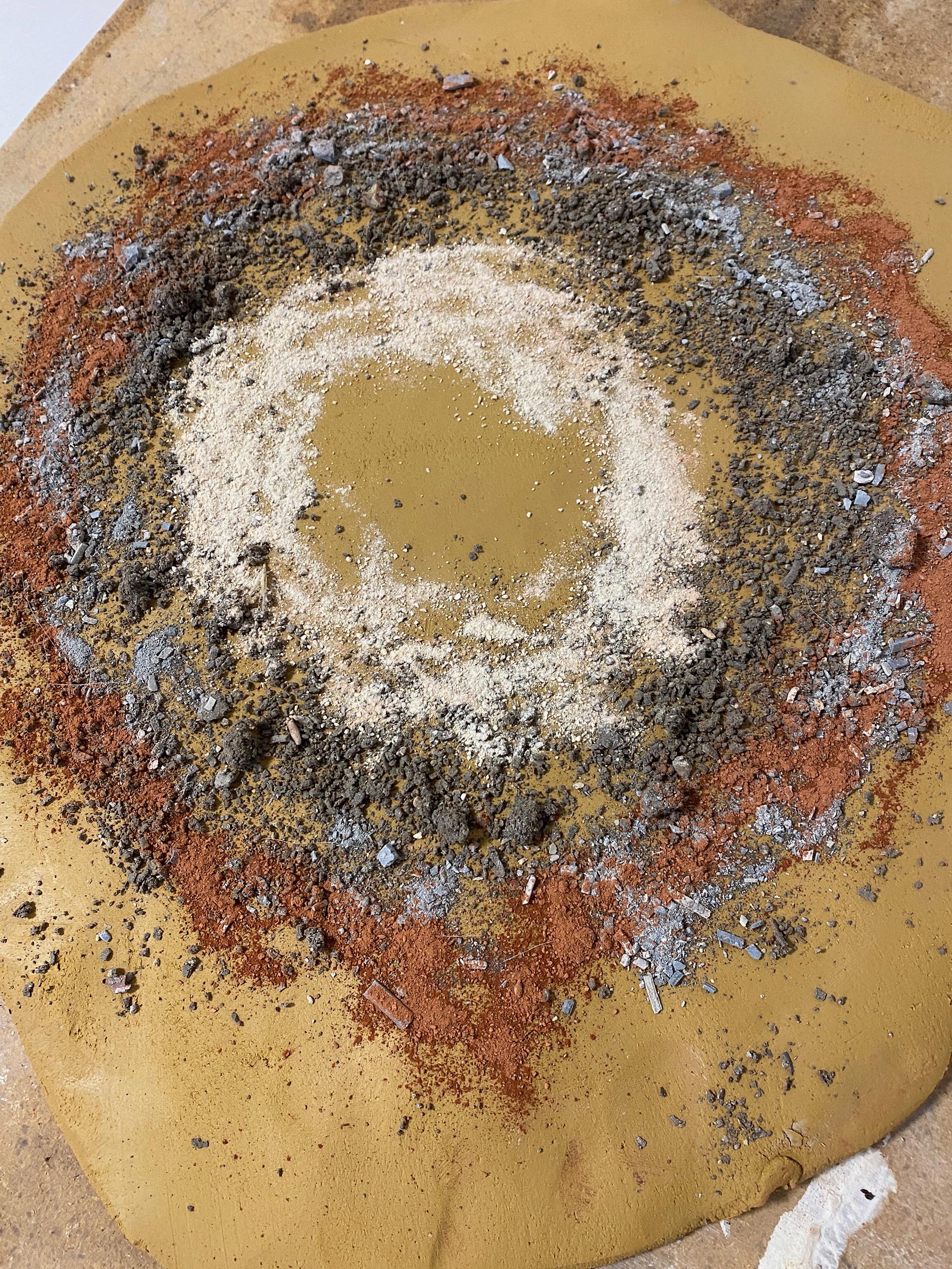
I also brought some local iron rich rocks from my family home in South Africa, I wanted to integrate these as a powder worked directly into the clay to see how the colours vary according to geography. It felt important to incorporate something from the landscape I grew up in into the work, these were also ground up to form to a fine powder to avoid any unwanted explosions in the kiln! The colour variety created in the photo above is from these rocks, various local grogs, and dried up pieces of local clay I have shaved off some works already. These were then rolled into the clay and ‘cemented’ in.
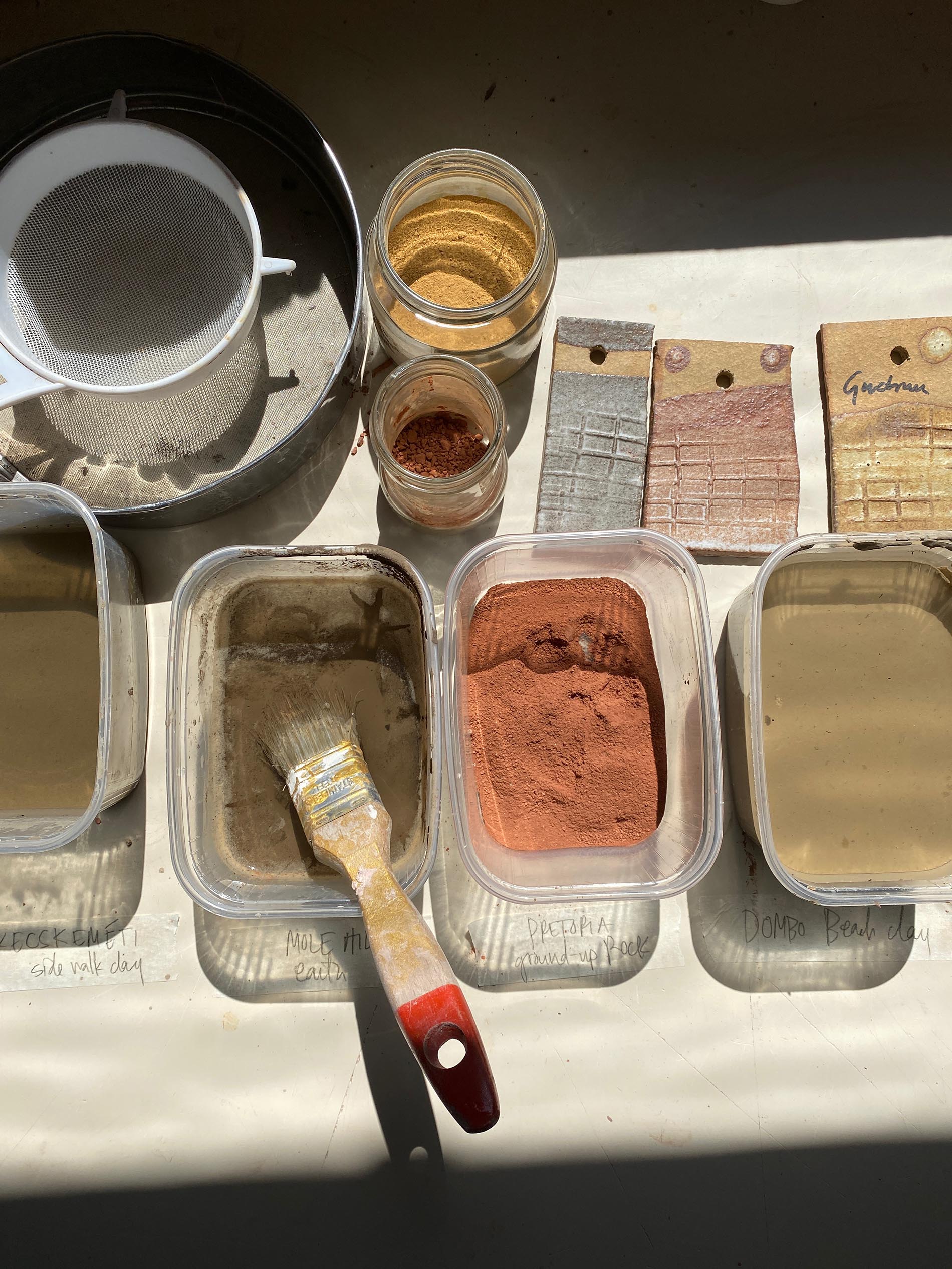
Subscribe to my newsletter
Subscribe to follow my clay journey
COPYRIGHT 2022 © SPIRITLAB CERAMICS


